Level crossings for cyclists
How to use level crossings safely as a cyclist
As cyclists we need to:
- Consider dismounting – especially when you’re about to cross the tracks diagonally.
- Follow signs and instructions. Download level crossings for cyclists (pdf) or view the guide below.
- Check both ways before crossing – if there is a train coming, don’t cross.
- Remain stationary until all the warnings stop.
- Check that the exit is clear before crossing.
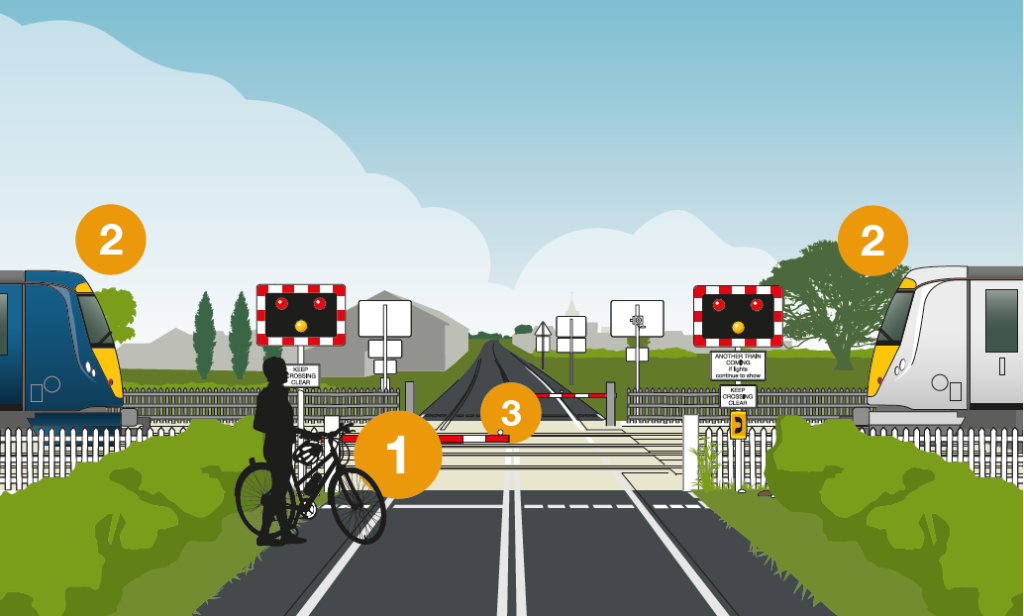
We also need to understand the potential dangers:
1. TEMPTATION
It’s tempting to jump the lights or race around the barriers. Don’t do it – you’re putting lives at risk.
2. ASSUMPTION
Don’t assume there is only one train or use previous experience to guess when the train is coming. Trains can come from either direction at any time.
3. FAILURE TO DISMOUNT
There’s a risk of getting a wheel stuck – especially when crossing the tracks diagonally. You may need to dismount and walk across.
4. DISTRACTION
It’s easy to get distracted, especially by phones and music. If you’re in a group don’t assume that someone else is looking out for you.
Understanding the safety systems used at level crossings
Level crossings enable us to cross the railway safely. Each is unique with differences in how often trains run, and the local geography. It’s particularly useful to understand the safety systems used at crossings:
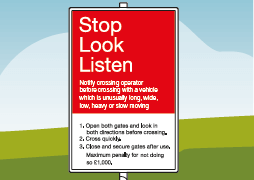
Stop, look, listen sign
- This sign indicates that we need to be extra vigilant – the crossing may not have a visual or audible warning.
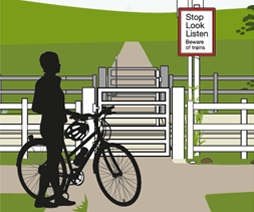
Gates
- We may need to open the gates ourselves although some are operated by railway staff.
- We must make sure that there is no train coming before and immediately after opening the gates.
- We must make sure that all gates are closed after using a crossing.
- If we are crossing in a group we must make sure there is enough time and space for everyone to cross safely.
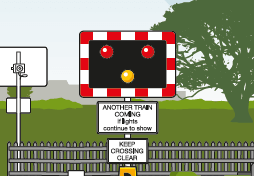
Warning lights
- Some crossings have amber and red warning lights. We must stop as soon as the lights come on, whether they are amber or red and not cross until the lights stop flashing – there may be more than one train.
- Some crossings have red and green lights. We must only cross when the green lights are showing.
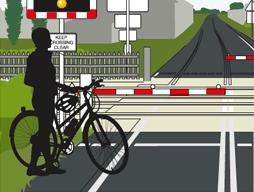
Barriers
- Some crossings are ‘open’ and don’t have barriers, some have a ‘full barrier’ which blocks the entire road, whilst others have a ‘half barrier.’
- We must not cross until the barriers are fully raised – there may be more than one train.
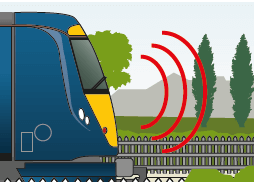
Alarms and sirens
- There are various types of alarms – some sound like sirens, some sound like train horns.
- We must not cross if we hear a warning sound or message. This is the opposite of a pelican crossing, where the sound indicates that it is safe to cross.
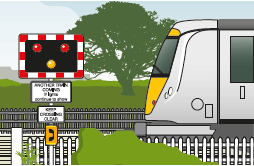
How long until the train actually arrives?
- As users, we can never be sure! There is no set amount of time from a warning activating to the train arriving and there may be more than one train.